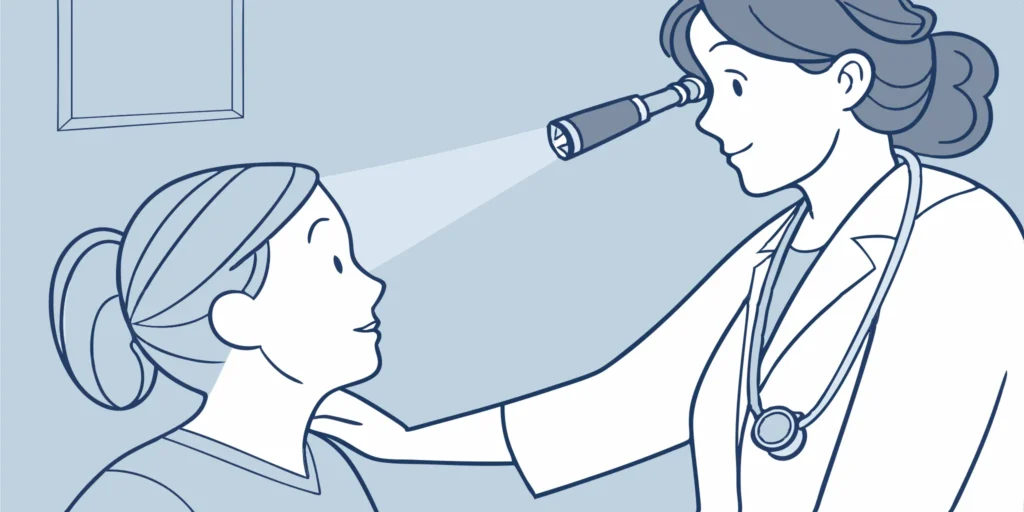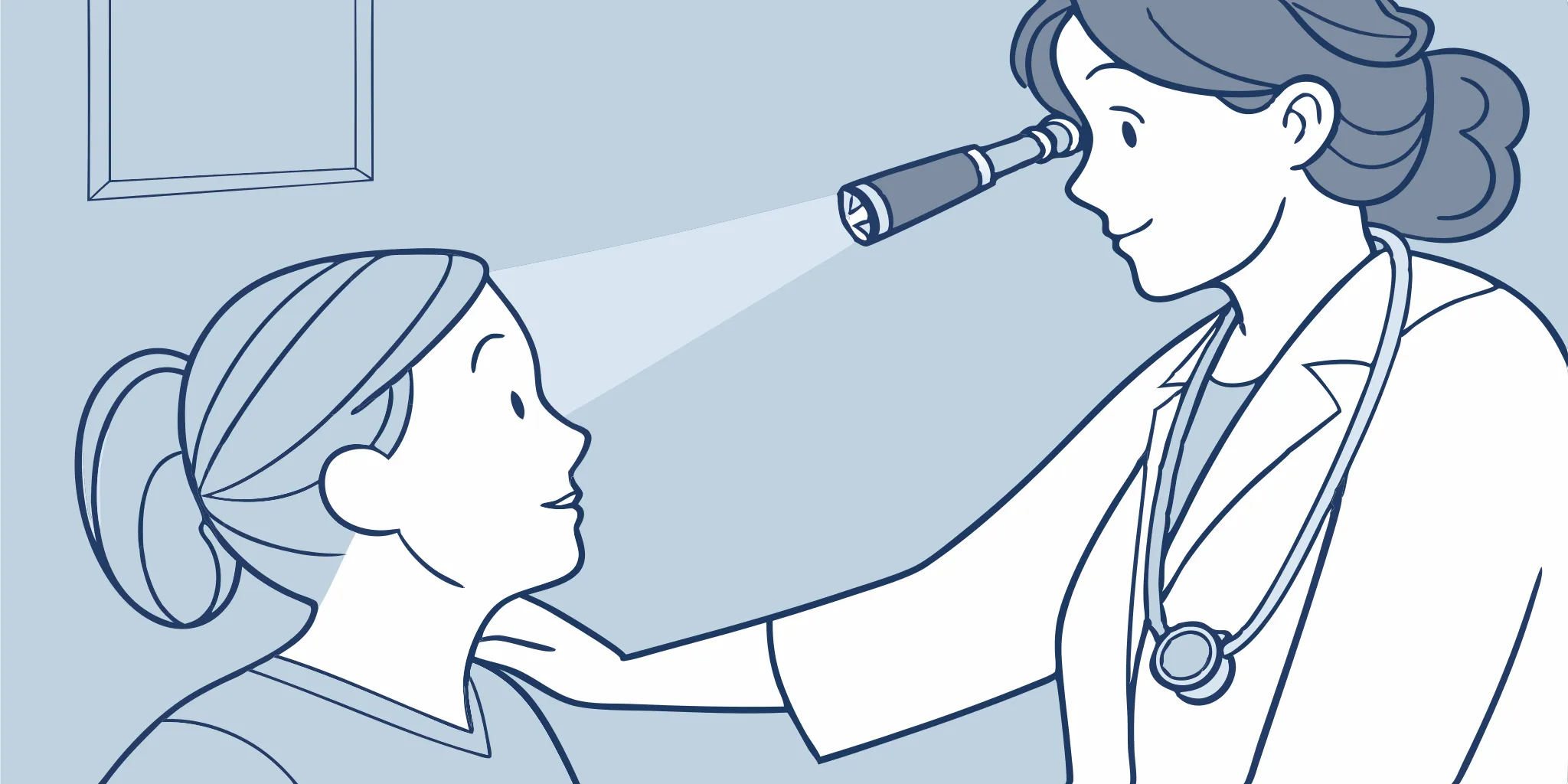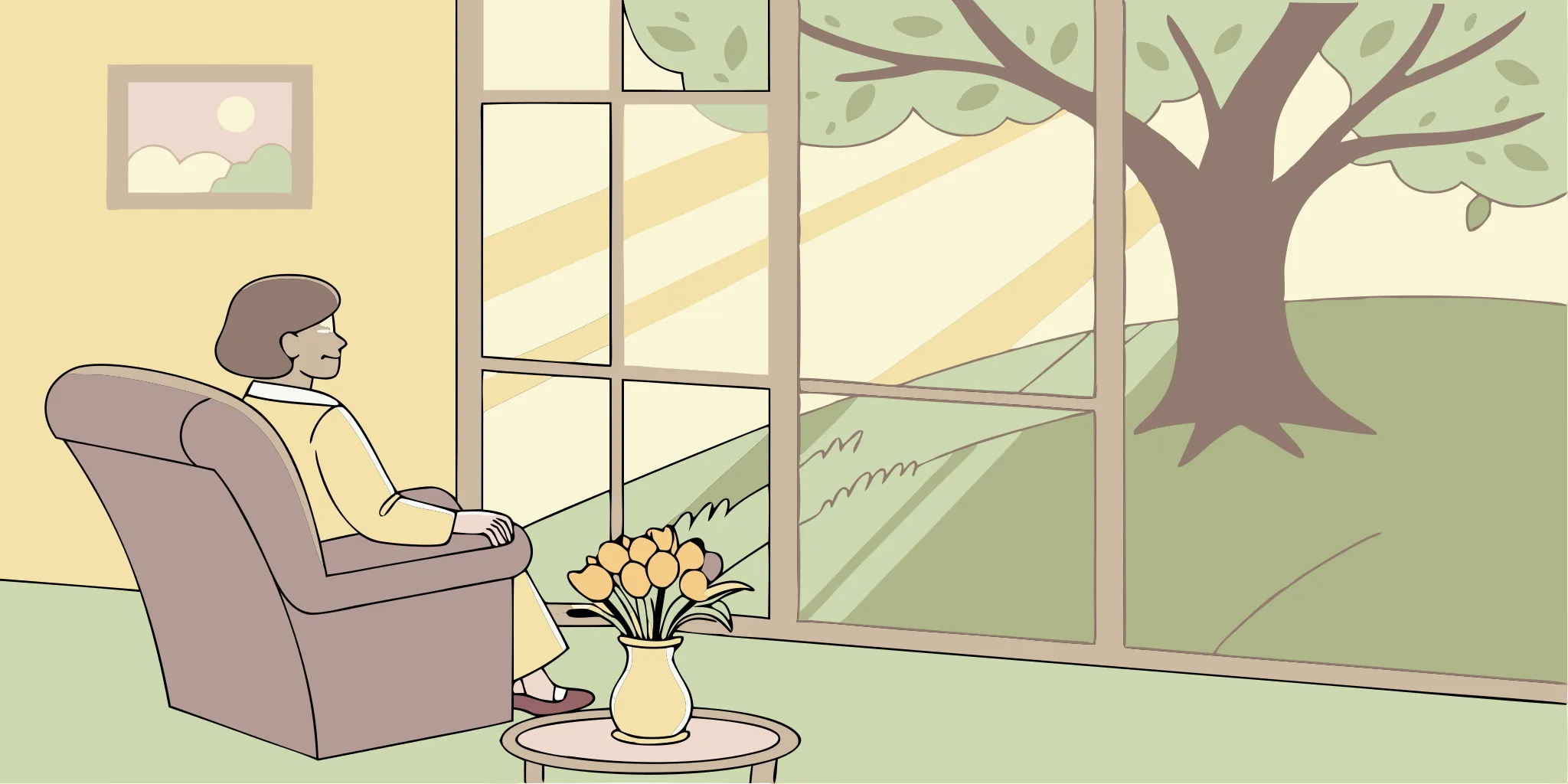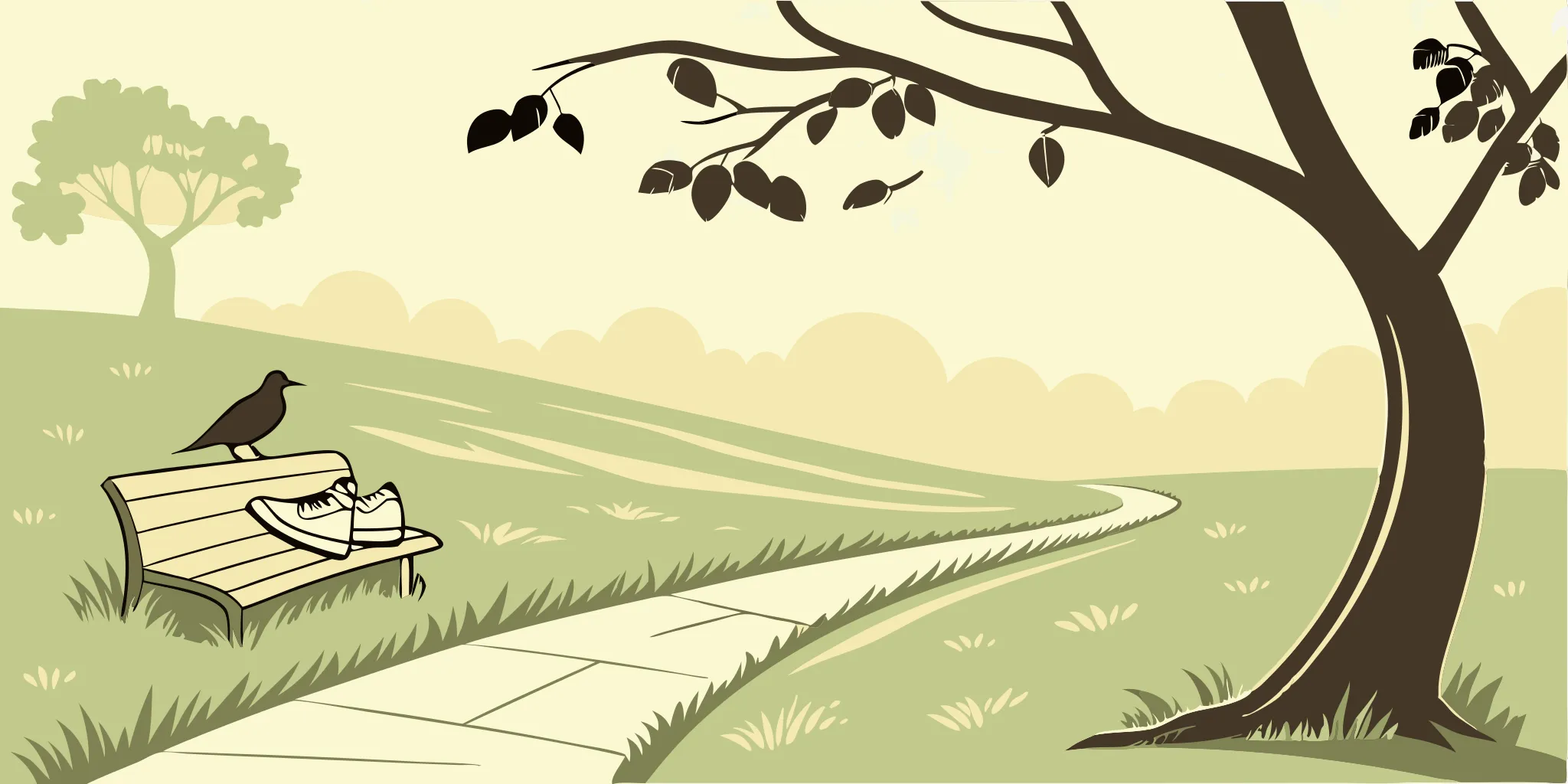In the aftermath of a head injury, every second counts. A quick assessment can help determine the severity of the situation and guide your next steps. The concussion eye test with flashlight is a simple yet valuable tool in these crucial moments. This test evaluates pupil response to light, offering insights into potential neurological impact. This article will provide a step-by-step guide on how to perform the concussion eye test with flashlight, explaining what normal and abnormal reactions look like. We’ll also discuss the importance of seeking professional medical evaluation and explore other essential aspects of concussion management, from recognizing symptoms to supporting long-term recovery.
Key Takeaways
- The flashlight test helps assess pupil response, but it’s not a definitive diagnostic tool: It’s a quick check, not a replacement for a professional medical evaluation after a head injury. Other factors besides concussions can affect pupil behavior.
- Recognize red flags and seek immediate medical care: Unequal pupils, slow pupil reactions, worsening headaches, drowsiness, repeated vomiting, seizures, and unusual behavior all require immediate medical attention after a head injury.
- Effective concussion management involves a comprehensive approach: From the initial assessment to long-term recovery, proper concussion management requires ongoing monitoring, appropriate rest, and a gradual return to activity under medical supervision. Utilize available resources and support for guidance.
What Is the Concussion Eye Test with a Flashlight?
What is a concussion eye test?
A concussion eye test using a flashlight helps assess a potential concussion by checking how your pupils react to light. Normally, both pupils should be roughly the same size. When a low-beam flashlight shines into one eye, the pupil should constrict quickly. A slow response could signal increased intracranial pressure (ICP), a serious complication requiring immediate medical attention. This simple test offers valuable clues about the brain’s condition after a head injury. It’s often used with other assessments for a more complete picture. You can find helpful information on managing concussions in our audio guide.
Why is it important?
Pupil response to light can be a simple indicator of a brain injury. Concussions often affect the eyes, with about 90% of people experiencing eye-related symptoms after a concussion. These symptoms can range from dilated pupils and drooping eyelids to difficulty tracking objects, misaligned eyes, and blurry vision. The flashlight test, sometimes called the Swinging-Flashlight Test, helps evaluate the pupillary light reflex pathway and identify potential disruptions caused by a concussion. While valuable for initial assessment, the flashlight test isn’t a replacement for a professional medical evaluation. For more information on what to do after a suspected concussion, review our recommended steps. Understanding how concussions impact memory is also crucial; explore our article on memory problems after a concussion.
How to Perform the Flashlight Test
This section explains how to perform a flashlight test to assess for potential concussion symptoms. Remember, this test isn’t a substitute for professional medical advice. It’s a tool you can use to gather more information, but a healthcare provider should always make the final diagnosis. For more information on concussions, explore our resources on concussion recovery.
Step-by-step guide
The flashlight test, sometimes called the swinging flashlight test, helps assess pupil response. Here’s how to perform it:
- Dim the lights: Find a dark room to make the pupils dilate. This helps you see their reactions more clearly.
- Position the light: Hold a low-beam flashlight about 12 inches from the person’s face, slightly off-center.
- Shine the light in one eye: Shine the light directly into one eye for two to four seconds, observing the pupil’s reaction. It should constrict (get smaller).
- Quickly move the light to the other eye: Shift the flashlight to the other eye, again observing the pupil’s reaction. This eye’s pupil should also constrict. This is called the consensual response. Learn more about eye responses in our guide to memory problems after head injuries.
- Repeat: Swing the light back and forth between the eyes a few times, noting the speed and symmetry of the pupil responses.
Create the right environment
Performing the test in a dimly lit room is crucial. Darkness encourages the pupils to dilate, making their response to light more noticeable. This helps you see even subtle changes that might indicate a problem.
Equipment needed
You only need a basic low-beam flashlight for this test. Avoid using a penlight or a flashlight with an extremely bright beam, as these can be too intense and make it difficult to observe the pupil’s reaction accurately. A simple flashlight from your phone can work if needed, but a dedicated low-beam flashlight is ideal. You can find affordable options at most drugstores.
What Eye Responses Does the Flashlight Test Evaluate?
The flashlight test, a quick assessment, offers valuable information about brain function after a potential head injury. By observing specific eye reactions, medical professionals can gain insights into the severity of a concussion. Let’s explore what this test assesses.
Pupil Size and Symmetry
One key observation during the flashlight test is pupil size and symmetry. In healthy individuals, pupils are roughly the same size. Shining a light into one eye typically causes both pupils to constrict equally. This is a natural reflex. After a concussion, however, one pupil might appear larger, or the pupils might not constrict symmetrically. This asymmetry can suggest a problem affecting the brain’s control of pupil function. For more information on memory problems after head injuries, check out this resource.
Constriction Speed and Consensual Response
Pupil constriction speed is another critical factor. Slow constriction can signal increased intracranial pressure (ICP), a serious complication after a head injury. Medical professionals look for a brisk, immediate constriction when introducing the light. They also observe the consensual response—the constriction of the opposite pupil even when the light is only directed at one eye. A delayed or absent consensual response can indicate dysfunction in the brain’s pathways controlling eye movements. For a helpful overview of concussion recovery, listen to our audio guide.
Pupil Shape and Other Abnormalities
Beyond size and responsiveness, pupil shape is also assessed. While pupils are typically round, an oval shape can indicate increased intracranial pressure. The flashlight test can also reveal a relative afferent pupillary defect (RAPD), affecting the eye’s reaction to light. This often points to a problem with the optic nerve or retina, which transmits visual information to the brain. Learn more about early steps after a concussion in this article. For further information on memory issues after concussions, read more here. For a personal recovery story, explore this account.
What Concussion Symptoms Can Eye Exams Detect?
Eye exams after a suspected concussion can reveal a range of symptoms, both obvious and subtle. These symptoms fall into two main categories: visual and non-visual.
Visual symptoms (blurred vision, light sensitivity)
After a head injury, visual disturbances are common. These can range from blurred or double vision to difficulty focusing. Many people also experience light sensitivity (photophobia), finding bright lights uncomfortable or even painful. Sometimes, the pupils may appear dilated, or one pupil might be larger than the other. These visual changes can make everyday activities like reading, using screens, or simply navigating familiar spaces difficult. If you experience any of these symptoms after a head injury, it’s essential to seek medical advice. For more information on managing these and other post-concussion symptoms, take a look at our article, Conquering Memory Problems After a Head Injury.
Non-visual symptoms related to eye function
Beyond the more obvious visual changes, eye exams can also uncover non-visual symptoms related to how your eyes function. These often involve difficulties with eye movements. You might find it hard to smoothly track a moving object, experience a limited range of eye motion, or have involuntary, jerky eye movements. These issues arise because the eyes and their controlling muscles are closely linked to the brain. As Medical News Today points out, “[t]he eyes are particularly vulnerable to the effects of concussions due to their proximity to the brain,” with “[v]ision-related activities occupy[ing] more brain territory than any other body function.” This close connection means that even seemingly minor eye movement problems can signal a concussion. For a clearer understanding of concussion recovery, listen to our introductory audio guide. If you’re unsure what to do after a suspected concussion, our article on early steps and strategies provides helpful guidance. We also have an article discussing memory problems after concussions, Can’t Remember Yesterday? Decoding Memory Problems After a Concussion, and a personal story about concussion recovery, My Concussion Recovery: From a Devastating Fall to a Triumphant Return.
Limitations of the Flashlight Test
While the flashlight test can offer helpful clues, it’s crucial to understand its limitations. Let’s clear up some common misconceptions about this test and why it shouldn’t be your only diagnostic tool.
Why it’s not a standalone diagnostic tool
The flashlight test primarily assesses pupillary response, offering a glimpse into potential neurological dysfunction. However, abnormal pupil reactions aren’t exclusive to concussions. Other factors, like pre-existing eye conditions, certain medications, or even fatigue, can influence pupil behavior. Think of it this way: a cough can indicate a cold, but it could also stem from allergies or other respiratory issues. Similarly, unusual pupil responses can suggest a concussion, but they don’t confirm it. Learn more about what to do after a suspected concussion.
A comprehensive concussion assessment involves a much broader evaluation than just pupil examination. Healthcare professionals consider various factors, including symptom history, physical exam findings, and sometimes, imaging scans. The flashlight test can be a valuable piece of the puzzle, but it’s not the whole picture. As experts at the Cleveland Clinic explain, healthcare providers use a combination of methods to assess concussions, not just one isolated test.
Common misconceptions
One common misconception is that the flashlight test can definitively diagnose a concussion at home. Unfortunately, that’s not the case. It can be a helpful initial check, but it can’t replace a professional medical evaluation. Online questionnaires can help you assess your symptoms and determine if you need to see a doctor, but they aren’t a substitute for professional guidance. Explore resources on memory problems after head injuries.
Another misconception is that a normal flashlight test result guarantees the absence of a concussion. While a normal response is reassuring, it doesn’t entirely rule out the possibility of a mild concussion or other head injury. Subtle neurological changes might not always manifest in noticeable pupillary abnormalities. If you have any concerns after a head injury, always consult a healthcare professional, regardless of your flashlight test results.
Eye Tests in Comprehensive Concussion Assessment
Other eye-related assessments
The swinging flashlight test isn’t the only assessment used to evaluate eye function after a suspected concussion. A comprehensive eye exam might also include tests for visual acuity (how clearly you see), eye movement control, and depth perception. Common eye symptoms after a head injury include dilated pupils, droopy eyelids, difficulty tracking objects, misaligned eyes, and blurry vision. An eye doctor can also check for convergence insufficiency, where your eyes struggle to turn inwards when focusing on a near object. These assessments, along with a broader neurological exam, help healthcare providers understand the extent of the injury and develop a tailored treatment plan. For more information on eye symptoms related to concussions, check out this resource from Medical News Today.
Importance of professional medical evaluation
While the flashlight test can offer valuable insights, it’s crucial to remember that at-home assessments are not a substitute for a full medical evaluation by a trained healthcare professional. If you suspect a concussion, seek medical help immediately. Doctors have the expertise and tools to accurately diagnose a concussion and rule out other serious conditions that may present similar symptoms. They can also assess the severity of the concussion and recommend appropriate treatment and recovery strategies based on your individual needs. A professional evaluation is essential for proper concussion management.
When to Seek Immediate Medical Attention
After a suspected head injury, it’s crucial to know when a situation demands immediate medical attention. While a flashlight eye test can offer helpful clues, it’s not a substitute for a doctor’s evaluation. This section highlights serious symptoms warranting a trip to the ER or your doctor right away.
Red flags in eye test results
Changes in eye responses can sometimes point to a more serious brain injury. During a flashlight test, watch for these red flags:
- Unequal pupil sizes: If one pupil looks larger than the other, this asymmetry could signal a problem. Even a subtle difference is important and shouldn’t be ignored. (Source: Medical News Today, “Concussion eyes: Symptoms, testing, and treatment”)
- Sluggish pupil reaction: A slow pupil response to light can be a warning sign. Instead of constricting quickly when exposed to light, the pupils might react slowly or not at all. This could indicate increased intracranial pressure (ICP), a serious complication. (Source: Cleveland Clinic, “Concussion Test: Assessment Types & How to Interpret Results”)
Other concerning symptoms
Beyond eye-related changes, other symptoms require immediate medical evaluation. If you notice any of the following after a head injury, seek help right away:
- Worsening headache: A headache that intensifies over time instead of improving is cause for concern.
- Drowsiness or difficulty waking up: Excessive sleepiness, trouble staying awake, or changes in consciousness warrant immediate attention.
- Nausea or repeated vomiting: While some nausea can follow a concussion, persistent or recurring vomiting is a red flag.
- Seizures, convulsions, or twitching: Any seizure-like activity demands immediate medical intervention.
- Unusual behavior, confusion, agitation, or restlessness: Significant changes in behavior, including confusion, increased agitation, or restlessness, should be evaluated immediately. (Source: Medical News Today, “Concussion eyes: Symptoms, testing, and treatment”)
If you are unsure about any symptom, it’s always best to err on the side of caution and get medical advice. For more information on early steps and strategies after a concussion, check out this helpful guide. Remember, prompt medical care is essential for proper concussion management and recovery.
Interpret Flashlight Test Results & Next Steps
Understand normal and abnormal responses
The flashlight test helps assess pupil function, offering clues about potential neurological issues. Normally, pupils are roughly the same size. When you shine a low-beam flashlight into one eye, both pupils should constrict quickly. This is called the consensual light reflex. A slow constriction could indicate increased intracranial pressure (ICP). Pupil shape matters too. While round pupils are typical, an oval shape might also suggest increased ICP. If both pupils dilate when the light shines in one eye, this is abnormal and needs immediate attention. Learn more about pupil assessment and other concussion tests on the Cleveland Clinic website.
Immediate actions if you suspect a concussion
If you suspect a concussion after a head injury, seek immediate medical help. Don’t hesitate to call 911, especially if you notice any of these red flags: one pupil is larger than the other, a worsening headache, drowsiness, repeated vomiting, seizures, unusual behavior, confusion, or restlessness. Medical News Today offers a detailed guide to concussion eye symptoms and when to seek emergency care. Any impact to the head or whiplash-like movement requires a concussion check. Never return to activities, especially sports, after a suspected concussion without medical clearance. Concussion Hub offers helpful advice on what to do after a concussion, including early steps and strategies to guide you.
Concussion Management and Long-Term Care
Proper concussion management is crucial for minimizing the risk of long-term complications. This involves a combination of immediate actions, ongoing monitoring, and strategies for supporting long-term recovery.
Implement Flashlight Tests in Sports
Sideline assessments using a simple flashlight can be a valuable tool in sports. Pupil response to light can be an early indicator of a potential brain injury. Coaches, trainers, and even parents can quickly check for irregularities in pupil size and reaction, helping identify athletes who may need further evaluation. This quick check can be especially helpful in fast-paced sports environments. The Cleveland Clinic offers more information on concussion tests. Implementing these tests as part of a larger concussion management protocol can contribute significantly to player safety.
Monitor Recovery Through Eye Tests
Eye symptoms are common after a concussion and can provide valuable insights into recovery progress. These symptoms can range from dilated pupils and droopy eyelids to difficulty tracking objects and blurry vision. Regularly monitoring these symptoms, along with other post-concussion issues, can help track recovery and ensure any lingering problems are addressed. Medical News Today provides a helpful overview of concussion-related eye symptoms. If you notice any unusual eye-related changes after a head injury, consult a healthcare professional.
Strategies for Long-Term Management
Effective concussion management goes beyond the initial assessment and involves a comprehensive approach to care. This includes both immediate and long-term strategies to support recovery and minimize potential long-term health consequences. A structured protocol, like the one offered by Complete Concussions, can provide a streamlined approach to concussion management in sports organizations. CATT Online also offers valuable resources and training for coaches and officials on concussion awareness. Good concussion management is pivotal for protecting long-term brain health. This involves rest, a gradual return to activity, and ongoing monitoring by healthcare professionals. Concussion Hub offers further guidance on early steps and strategies after a concussion, including personal recovery stories.
Resources and Support
Dealing with a concussion can feel overwhelming, but remember—you’re not alone. Plenty of resources are available to support you, your family, or your athletes through every step of the recovery process. Whether you’re a parent, coach, athlete, or patient, these organizations and programs offer valuable information and guidance:
For those involved in youth sports, understanding concussion management is crucial. The Concussion Awareness Training Tool (CATT) offers coaches and officials evidence-based strategies for recognizing and responding to concussions. This program emphasizes proper assessment, including visual checks like the flashlight test. It also provides practical guidance for creating a safe environment for young athletes. The CDC’s HEADS UP program also offers essential resources for coaches, parents, and athletes on concussion recognition and response, stressing a comprehensive approach to concussion management, including visual assessments.
Complete Concussion Management offers a streamlined protocol for managing concussions in any sports organization. Their certification provides in-depth training on assessment and management strategies, including visual evaluations. This resource helps sports organizations implement a standardized approach to concussion care. Finally, this overview of concussion recognition and response from CATT provides a concise guide for coaches, parents, and athletes. Reviewing this information before a sports season can help everyone understand concussion signs and symptoms, including visual disturbances detectable with a flashlight test. Early recognition and proper management are key for a safe and effective recovery. Explore these resources to find the knowledge and tools you need to support those recovering from a concussion.
Related Articles
- Concussion & Brain Fog: The Eye-Neck Connection – Concussion Hub
- What is a Concussion Baseline Test? – Concussion Hub
- What should I do after a concussion? – Concussion Hub
- What should if my player has a concussion? Early steps and strategies to promote better recovery. – Concussion Hub
Frequently Asked Questions
If I notice an abnormal pupil response during the flashlight test, does that automatically mean a concussion?
Not necessarily. While an abnormal pupil response can be a sign of a concussion, other factors can also affect pupil behavior. These include certain medications, pre-existing eye conditions, or even fatigue. It’s important to consider the flashlight test as one piece of the puzzle, not a standalone diagnostic tool. A proper diagnosis requires a comprehensive evaluation by a healthcare professional.
Is the flashlight test something I can rely on to assess myself or my child at home?
The flashlight test can be a helpful initial check, but it shouldn’t replace a professional medical evaluation. It’s simply a quick way to observe pupil responses, which can offer clues about a potential head injury. A healthcare provider can conduct a more thorough assessment, considering various factors beyond pupil reactions, to determine if a concussion has occurred.
Besides the flashlight test, what other eye-related assessments are used to evaluate a potential concussion?
A comprehensive eye exam after a suspected concussion might include tests for visual acuity (how clearly you see), eye movement control, and depth perception. Doctors might also check for convergence insufficiency, which is difficulty focusing on near objects. These tests, combined with a neurological exam, help healthcare providers understand the extent of the injury.
What should I do if I or someone I know experiences concerning symptoms after a head injury, even if the flashlight test seems normal?
Always err on the side of caution. If you’re worried about any symptoms after a head injury, seek medical advice immediately, regardless of the flashlight test results. Subtle neurological changes might not always show up in noticeable pupillary abnormalities. A healthcare professional can provide a proper diagnosis and recommend the best course of action.
Where can I find additional resources and support for concussion management and recovery?
Several organizations offer valuable information and support for concussion recovery. The CDC’s HEADS UP program provides resources for coaches, parents, and athletes. Complete Concussions offers a streamlined protocol for managing concussions in sports organizations. CATT Online provides training on concussion awareness for coaches and officials. Concussion Hub itself offers various articles, audio guides, and personal stories to support individuals throughout their recovery journey.






